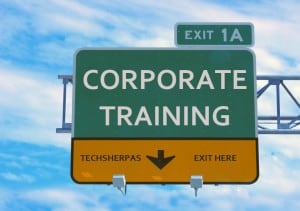
As the workforce continues to evolve with the economic conditions, capitalism has faded and talentism has begun to resonate within companies nationwide. This shift emerged as companies continued to struggle to stay ahead through the down economy, where it matters less if companies can access the capitalism they need and more on their ability to attract and retain the talent that drives success. The US Department of Labor estimates that in the 21st century, 60 percent of all new jobs will require skills possessed by only 20 percent of the workforce – that’s a pretty significant talent gap. Talent is a key factor in achieving a competitive advantage, and the reality is that talent is also a scarce resource, specifically when it comes to technological skills. With this shift, companies need to reevaluate their business strategies and ensure that a talent strategy is in place. One that attracts, retains, and develops talent. They can have a strategy that includes hiring talent, and/or hiring and then providing corporate training and personal development to build talent. Both strategies have proven to be successful.
The benefits of Corporate Training & Personal Development
Studies have shown there is a significant link between high engagement and personal development. There are several reasons why organizations should encourage and provide personal development and skills training for their employees.
Encouraging personal growth leads to employee motivation and retention
Training can give your organization a competitive edge
Increase Employee Performance
According to the Corporate Executive Board (CEB), supervisors who are effective at developing people can increase employee:
Performance by up to 25 percent
Engagement by up to 29 percent
Retention by up to 410 percent
Skill Development, through training and certification, is one way companies can encourage improvement and development of their employees, who are the driving forces behind business success.
Embrace technology to create a strong talented workforce
Technology should not be feared and avoided, but rather embraced and utilized. Use it to strengthen your talent strategy. Use it to maximize your resources.
In a recent article by Marty Nowlin (Riding the Technology Wave), he discusses how companies need to embrace technology, confront changes head on, and align it with the right talent strategy. He lays out 6 steps that can be taken to maximize the opportunity that technology presents:
Use technology to discover untapped potential – Use it to reach and work with people from all over the world. The talent you need may not always be in your backyard. Through technological advances you can reach the talented people you need, no matter where they are located!
Use technology to make training more effective – Again, with the advancements in technology, training can be done more effectively and efficiently, saving time and money. When training can take place remotely from the office, from an employee’s work stations, they can transfer knowledge more easily and apply it on the spot. Remote connectivity has provided significant enhancements to the training industry. It allows people to connect to the office and with each other without physical presence. With Remote Classroom Instruction (RCI), people can train from anywhere – home, office, etc. – saving time and money. Read more about Remote Classroom Instruction (RCI) here.
Work or train virtually.
Work or train virtually.
Use Technology as a “one-size-fits-one” approach – One of the great things about technology is that it has evolved in such a way that it can really be personalized to fit a person’s or company’s specific needs. One example – a company can create a menu of training classes that their staff can select from based on their specific job roles and functions.
Use specific technologies to optimize productivity – Technology can provide companies with a competitive advantage by utilizing specific software tools that will “lean-out” business processes and create efficiency. Software selection is typically based on the business operations, type of clients, location of their clients, and other offices, etc. Some examples include:Teleconferencing; Mobile Platforms and applications; Big Data; and Social Networking.
Retain employees by using technology as the facilitator for flexible working – Get the talent you want by giving them the opportunity to have a flexible work schedule and work environment. Technology allows people to work from home, in another state, or other public locations – not the typical work station. Opportunities like this can be very appealing and a strategy in attracting top talent.
Take advantage of easy access to information but carefully balance how to use it – Technology gives us access to a plethora of public knowledge, especially through the social networks. Use it to find information about the talent you seek, but be careful as to violate one’s privacy.
Does your company encourage personal or professional growth?
If an organization places high importance on skill development and values employee development, then employees will believe it’s important for their own success. That is why businesses should offer corporate training and personal development. Find out of your company had a skill development strategy or plan in place. If they do, how has it helped you advance in your career and grow personally and/professionally?

